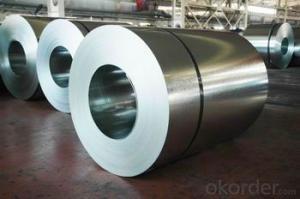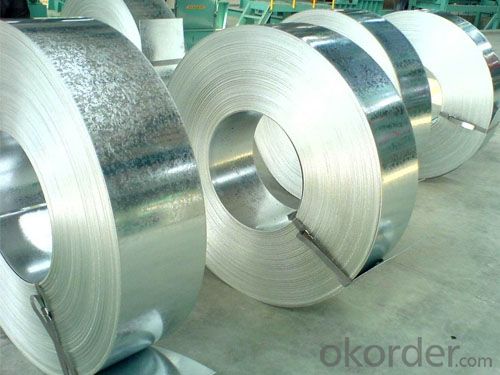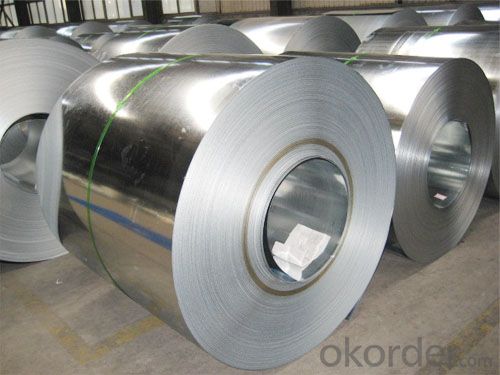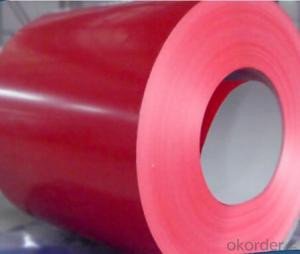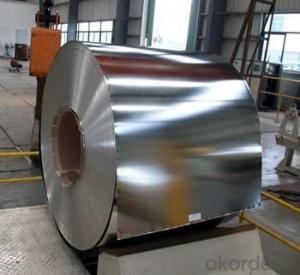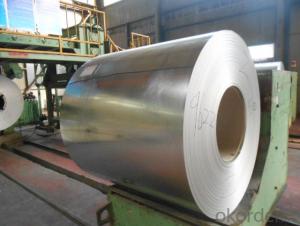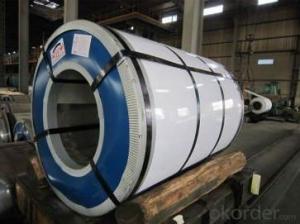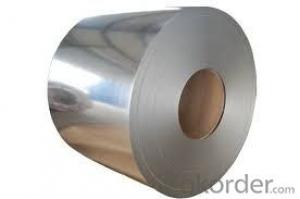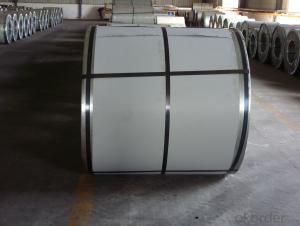N.1 HOT-DIP GALVANIZED STEEL COIL
- Loading Port:
- China Main Port
- Payment Terms:
- TT OR LC
- Min Order Qty:
- -
- Supply Capability:
- -
OKorder Service Pledge
OKorder Financial Service
You Might Also Like
Quick Details |
|
|
|
|
|
Standard: | AISI,ASTM,BS,DIN,GB,JIS | Grade: | SGCC,DX51D/DX52D/S250,280GD | Thickness: | 0.12-4.0 mm |
Place of Origin: | Brand Name: | N/M | Model Number: | ssp-226 | |
Type: | Steel Coil | Technique: | Cold Rolled | Surface Treatment: | galvanized/ Galvalume/zinc coatting |
Application: | strong anti-corrosion ability,cold bending molded manufacturablity | Special Use: | High-strength Steel Plate | Width: | 600-1250 mm |
Length: | in coil | product: | g40 prime/secordary hot-dip galvanized cold rolled steel coil/sheet |
|
|
Packaging & Delivery |
|
|
|
|
|
Packaging Detail: | standard export package,Other types of packing can be customized as per client's requirement. | ||||
Delivery Detail: | as per client's requirements | ||||
Specifications
1.Mateials:SGCC,DX51D / DX52D /S250,280GD
2.Size:width:600-1250mm(900mm,1215mm,1250mm,1000mm the most common)
thickness:0.15-2.0mm
length:1000-6000mm,as your require
3.Zinc coating :60-180g( as required)
4.Coil id:508mm
5.Coil weight: 3-5MT(as required)
6. Surface:regular/mini/zero spangle, chromated, skin pass, dry etc.
7. Application:
With excellent cold bending molded manufacturablity, good decoration effect, strong anti-corrosion ability, galvanized steel coils and sheets are also pollution-free and easily recycled. Accordingly, they can be used as final products and basic plates of color coated steel coils.
8.PackagingDetails:
Standardexport package.
Othertypes of packing can be customized as per client's requirements.
- Q: How are steel coils inspected for formability using forming tests?
- Steel coils are inspected for formability using forming tests by subjecting them to various forming processes such as bending, stretching, or deep drawing. These tests help evaluate the ability of the steel to undergo deformation without cracking or tearing. The formed samples are then inspected for any defects or imperfections, such as surface irregularities, fractures, or wrinkling. This allows manufacturers to assess the quality and suitability of the steel coils for specific applications, ensuring they meet the required standards of formability.
- Q: 911 conspiacy theorists. Can fire melt steel?
- They can't melt that fast At that temperature, the fire caused by the jet's fuel didn't hot enough to melt the concrete steel. As you see in the video the flame took only 20 minutes. The heat is not fast enough to penetrate all fragment of the concrete steel from top to the foundation, steel is not a good heat conductor like the iron. The explosion only took 5 stories, even all flame in all stories will take 4 hours to melt the core - in this case the core is the worst quality alloy which I don't think is used by WTC. The speed of the falling of WTC building was way too fast. It only took about 9.5 seconds. As an illustration, we throw an object - no matter the weight from the top of WTC, let's count how long it takes from the top to the ground as easy as senior high physics. We took the height of as h = 526.3 m, the gravity 9.8 m/s^2 then apply them to the Newton's equations, h = 1/2*g*t^2 then t = sqrt(2*h/g) = sqrt(526.3/9.8) = 7.32 seconds. The difference is just 2.2 seconds. The resistance of the concrete and solid materials should give at least 200% of the fall duration. WTC's 9.5 secs to fall is even faster a ball sliding on its wall from top the ground. I don't know what happened there. But my Basic Physics lecturer at first grade in my college -who concentrates in Materials- said that it is very odd that the flame burning 5 stories (at most 2% of 110 stories WTC) took only 20 minutes to melt the core of 30% after explosion top stories' core. A friend of mine, got summa cumlaude Bsc in civil engineering - concentrated in structure, said that the pan cake fall has never occured before due to fire causes. If the heat is hot enough to melt the core then the building should bend forward at a broad angle because the strain caused by the heat is not uniformly distributed along the building's core - remember steel is not a good heat conductor. I'm not speculatiing, but 9/11 is an odd tragedy
- Q: Ok, I have motorcycle classes and im afraid that I wont feel the gear shifter when shifting. So I want to make the boot softer from the toes where the steel is at so i can feel the gear shift with my toes. When i walk and bump into something by accident with my boots I dont feel anything I almost dont notice it. So I think i will be a problem since I wont be able to feel anything.
- Steel can't be softened. You really ought to sit on the bike when it's not running and see how it feels when shifting. You may be imagining a problem that doesn't exist. A lot of bikers where steel toes to protect their feet. I can't believe that this is a real problem, but if it is for you, then get different boots.
- Q: How are steel coils inspected for yield strength using tensile testing?
- Tensile testing is the method used to inspect the yield strength of steel coils. This involves subjecting a sample of the coil to controlled tension until it reaches its breaking point. Through this test, various mechanical properties of the steel, including yield strength, can be determined. To conduct the tensile testing for yield strength inspection, a small strip of the coil is cut and prepared. The strip is then placed in a machine specifically designed for tensile testing. This machine consists of two grips that securely hold the strip at opposite ends. Subsequently, the machine applies a steadily increasing force to the strip, causing it to elongate until it eventually breaks. Throughout the test, the machine measures the force applied and the elongation of the strip. The yield strength is determined by identifying the point on the stress-strain curve where the material begins to undergo plastic deformation, meaning it exhibits permanent deformation without any increase in load. Typically, the yield strength is reported as the stress required to cause a specific amount of plastic deformation, such as 0.2% or 0.5%. This value represents the maximum stress that the steel can endure without experiencing permanent deformation. By performing tensile testing on a sample of the steel coil, it becomes possible to ascertain its yield strength. This information is vital in ensuring the quality and dependability of the steel coil, as it indicates the maximum stress it can tolerate before permanent deformation occurs. Furthermore, this testing method allows for the comprehensive evaluation of other mechanical properties, including ultimate tensile strength, elongation, and modulus of elasticity, thus providing a thorough understanding of the steel's performance characteristics.
- Q: I expect that I will be questioned about my knowledge in methoding for steel castings, in a interview. I dont know about it. Can someone explain me in simple language and give me some links, like how I can explain methoding for steel castings.....key points...help please...so that i will pass the interview as if I have experience in methoding....thanks
- It is very difficult to define Methoding of Steel castings by one sentence. Actually it encompasses the total casting process. Normally it would mean a) Pattern design i.e. what type of pattern it would be- wooden, metallic, split or full, loose or fitted on a match plate or any other, how will be the parting line. b) Design of the gating system. c) Design of risering i.e. numbers, size and location of risers. d) Design of molding process i.e. sand system to be used, mold box size. But to do justice to the above mentioned activities, you need to consider other parameters of the casting process such as chemical composition, solidification characteristics, pouring temperature, pouring time, knock out time etc. As I said Methoding of Steel castings means designing of the total casting process from inception to final product.
- Q: How are steel coils used in the manufacturing of industrial mixers?
- Steel coils are used in the manufacturing of industrial mixers as they are typically used to construct the main body and structural components of the mixer. The coils are formed into the desired shape and size, providing strength, durability, and stability to the mixer, allowing it to withstand the rigorous mixing processes involved in industrial applications.
- Q: What are the typical dimensions of a steel coil?
- The typical dimensions of a steel coil can vary depending on its specific application and industry. However, common dimensions for steel coils include a width ranging from 0.5 inches to 72 inches, and a thickness ranging from 0.010 inches to 0.625 inches. The inner diameter of the coil is usually between 16 inches and 24 inches, while the outer diameter can range from 48 inches to 72 inches.
- Q: How are steel coils used in the manufacturing of drivetrains?
- Steel coils are commonly used in the manufacturing of drivetrains as they provide the necessary strength and durability required for these critical components. The steel coils are typically formed into various shapes, such as gears, shafts, and axles, which are then machined and assembled to create the drivetrain system. These steel components help transfer power from the engine to the wheels, allowing the vehicle to move efficiently and smoothly.
- Q: I have an old classical guitar, which uses nylon strings. ive never really liked the sound produced by the nylon, so im curious if you can use a classical guitar with acoustic guitar steel strings. thanks!
- NO ! NO! NO! Do not put steel strings on a classical guitar!! The increased tension can actually damage the guitar by causing the top to warp and can eventually pull the bridge right off of the guitar! I have seen it happen more than once! Ignore the other post, they are wrong! Classical guitars are designed to use nylon strings only!
- Q: How are steel coils inspected for yield strength?
- Yield strength inspection of steel coils involves a series of testing methods. The most commonly used method is the tensile test, where a small sample is taken from the coil and subjected to a controlled load until it reaches its yield point. In the tensile test, the sample is progressively stretched until it deforms and ultimately fractures. Throughout this process, the load and elongation data are continuously recorded. The yield strength is then determined by pinpointing the point on the stress-strain curve where the material starts showing plastic deformation or permanent elongation. Another approach to inspecting steel coils for yield strength is the hardness test. Since hardness is often linked to yield strength, a hardness test can estimate the material's yield strength. This test involves measuring the steel coil's surface resistance to indentation or penetration using instruments like a Rockwell or Brinell hardness tester. Moreover, non-destructive testing methods like ultrasonic testing and magnetic particle inspection can also be utilized to assess yield strength. Ultrasonic testing employs high-frequency sound waves to detect any internal defects or inconsistencies in the material's structure. On the other hand, magnetic particle inspection relies on the application of magnetic fields and the usage of magnetic particles to identify surface cracks or defects. In conclusion, there are various testing methods available to inspect steel coils for yield strength. These methods offer valuable information to manufacturers and inspectors regarding the steel's quality and performance capabilities, ensuring that it meets the required standards and specifications.
Send your message to us
N.1 HOT-DIP GALVANIZED STEEL COIL
- Loading Port:
- China Main Port
- Payment Terms:
- TT OR LC
- Min Order Qty:
- -
- Supply Capability:
- -
OKorder Service Pledge
OKorder Financial Service
Similar products
Hot products
Hot Searches
Related keywords
